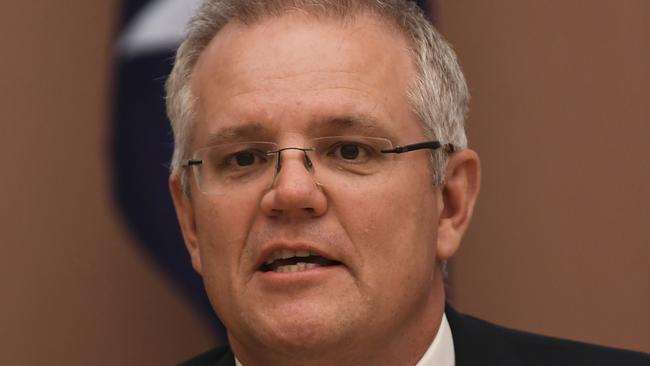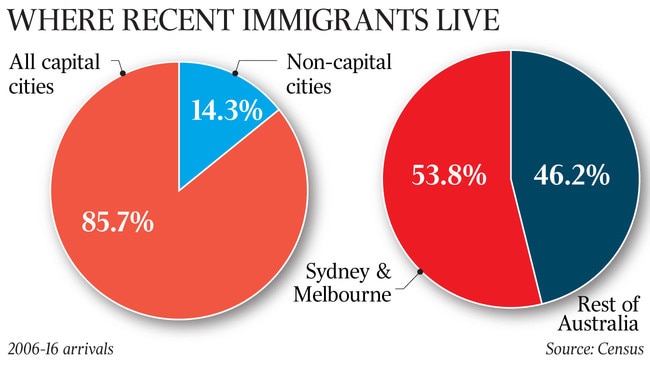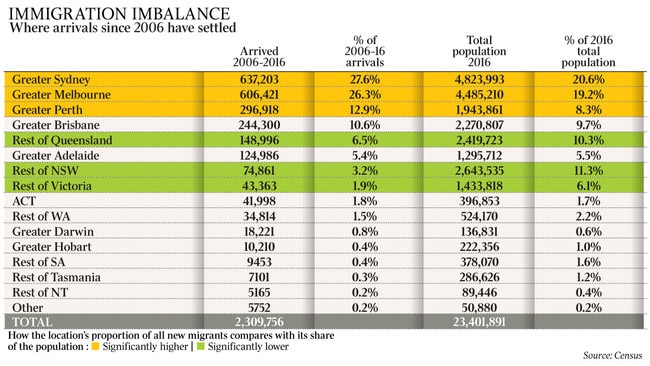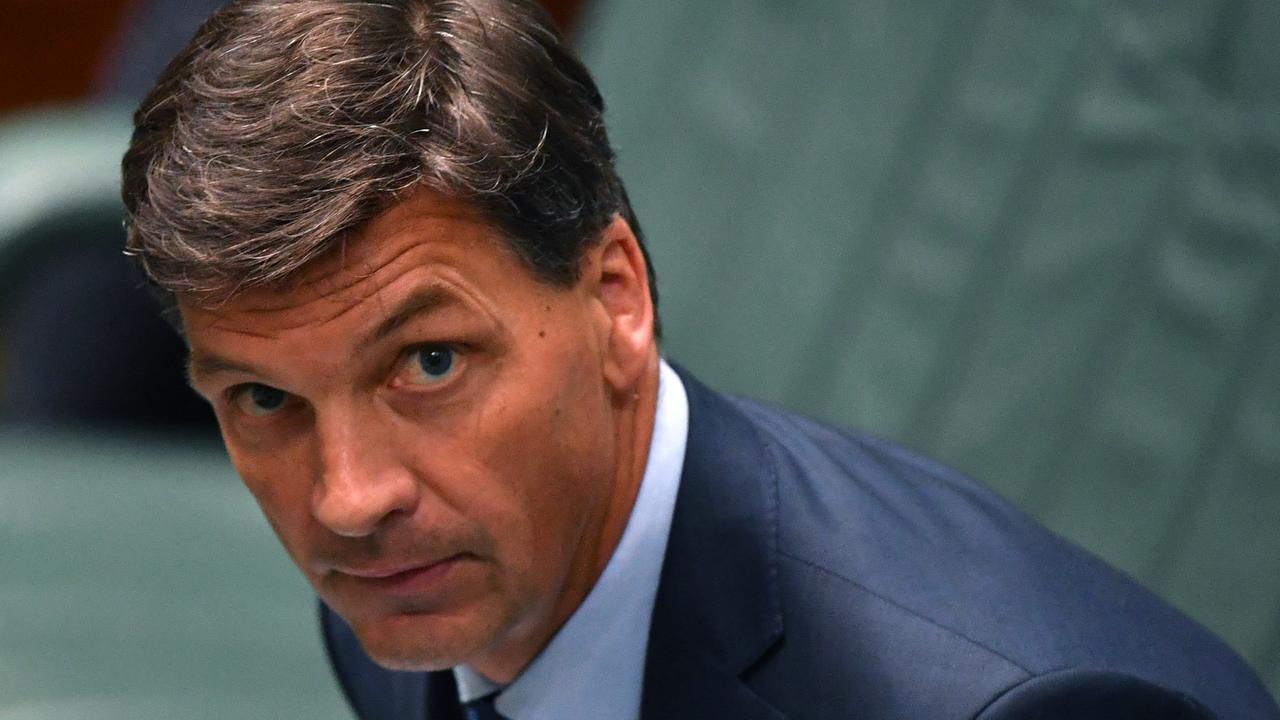Cities fix: PM’s plan to send migrants to regions for five years
Labor has poured cold water on a government proposal to mandate that new migrants live in regional areas for up to five years.

The Morrison government is due to consider a plan that would require some new immigrants to settle for up to five years outside Sydney or Melbourne, as part of a yet-to-be-released landmark population policy to ease congestion in the two largest capital cities.
The Australian understands a decision on a time period for mandatory regional settlement — as part of a new migration program — had been due to go to the Turnbull cabinet last week. It has yet to be put to the new cabinet under Scott Morrison.
Two government sources have confirmed that a period of regional settlement, of up to five years, was a key plank of the population package put before the government. It came with a requirement to locate in regional areas or capital cities other than Sydney or Melbourne, where the rate of migrant settlement has reached almost 90 per cent of new arrivals.
However, Labor frontbencher Richard Marles has poured cold water on the proposal. The opposition defence spokesman, who lives in the regional Victorian seat of Corio, said he did not think forcing migrants to live in the regions would work.
“I’m not sure that mandating new immigrants living in regional Australia is going to work,” Mr Marles told Sky News. “I’m not actually sure there is the power to put that in place, to actually mandate that they do live there.
“So I am a little worried about the particular prescription they are putting in place to bring this about.”
Mr Marles said he was open to other proposals that would encourage migrants to settle in regional Australia. “I do think that looking at ways in which we can get new migrants settling in regional Australia is worthy of further thought there is no doubt about that,” Mr Marles said. “The whole issue of population looks very different depending on what part of Australia you live, as you say I live in regional Australia and for us we want to see a greater population, and that is a very different perspective from people who live in western Sydney for example.”
A senior government source confirmed that the regional settlement timeframe was to have been discussed by cabinet before the leadership coup that led to the resignation of Malcolm Turnbull.
Under the five-year model it is believed the new visa class would apply to certain categories of new arrivals under the skilled and family migration program but in some cases could also apply to refugees. The five-year period is understood to be based on a threshold, after which many migrants would be likely to choose to stay in the regional location after establishing ties in the community, including through employment and children’s schooling.

The move to impose regional settlement as a condition of migrant visas has been in development since the 2016 election, in response to increasing community concerns about urban pressures and congestion as well as social integration.
Mr Morrison’s office would not comment on the development of the population package, whether it would be revised and when it might go to cabinet. Cities, Urban Infrastructure and Population Minister Alan Tudge and Home Affairs Minister Peter Dutton also would not confirm details.
Mr Tudge recently released figures that demonstrated the scale of the problem in Sydney or Melbourne, which created significant strains on existing infrastructure that state governments had been slow to address.
Mr Morrison, who is a supporter of a strong migration program as a driver of economic growth, is said to have signed off on the original package as treasurer but would be likely now to seek to review the package before taking it to the new cabinet. In a sign that as Prime Minister he will seek to put his own stamp on the policy, Mr Morrison has created the new portfolio of population to sit alongside infrastructure and cities, now overseen by Mr Tudge, the former citizenship minister.
He has also hived off the immigration portfolio from the Ministry of Home Affairs to become a standalone portfolio.
The Australian revealed this month that, with Australia’s population having reached 25 million, Department of Home Affairs figures showed that, of the 112,000 skilled migrants who arrived in the past financial year, 87 per cent had settled permanently in Sydney or Melbourne.
Mr Tudge, who was a key minister in the development of the population plan, had argued in a speech early this month that it was not the size of the migration program alone that was a factor in population pressure but the distribution of those people coming in.
“If the population was distributed more evenly, there would not be the congestion pressures that we have today in Melbourne and Sydney,” Mr Tudge told a forum in Melbourne.
“Nor would there be if the infrastructure was built ahead of demand.”

The Turnbull government had flagged a migration and settlement policy before the end of the year that would include visas conditional on a proportion of new skilled migrant arrivals settling in cities other than Sydney and Melbourne and in the regions.
A recent report by Treasury and the Department of Home Affairs estimated the immigration program added 1 per cent to GDP a year, with modest increases to GDP per capita.
The broader population plan is also believed to include policies for better co-ordination of infrastructure development based on future growth trends.
NSW Premier Gladys Berejiklian has previously called for the issue to be made a priority for the Council of Australian Governments as Sydney and NSW have experienced significant congestion problems.
The issue was brought to the boil earlier this year when former prime minister Tony Abbott raised concerns about falling quality of life for people living in Sydney and called for the migration intake to be cut to 80,000 a year until infrastructure caught up.
Mr Morrison at the time rejected the idea, saying it would cost the budget about $4 billion to $5bn over the next four years because of the slowdown in economic growth, which is boosted by skilled migration.
The Australian last month revealed that the annual permanent migration intake fell by more than 10 per cent to fewer than 163,000, the lowest level in more than a decade, as new integrity measures imposed by Mr Dutton cut visa approvals.





